There’s something truly mesmerizing about running your fingers through a horse’s silky mane or stroking its shiny coat, marveling at the softness and luster.
As someone who has been around horses for over 25 years, my fascination with equine hair was initially sparked when I wondered whether horse hair was considered fur or hair, and whether the mane and tail were the same as our hair.
This curiosity has led me to delve deeper into the knowledge of equine hair.
From memorable moments like the unforgettable shedding season when hair would end up everywhere – down my shirt, in my mouth, and all over my clothes to discovering the solo comb, which was a godsend for sensitive horses that hated having their manes pulled short – I’ve learned firsthand the complexities and unique aspects of horses’ hair.
In this blog post, we’ll explore 20 amazing facts about equine hair that will leave you even more curious and eager to learn about these majestic creatures. So, let’s dive in!
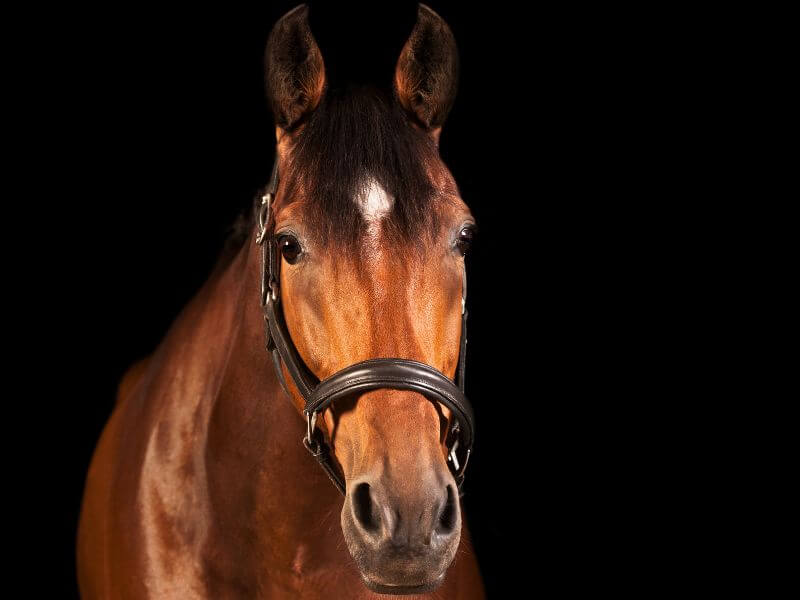
1. Hair vs. Fur: What’s the Difference?
Horses have hair, not fur.
Although there is no scientific difference between hair and fur, a horse’s coat has been called hair because it is not dense like that of fur garments humans would wear.
Both hair and fur consist of the protein keratin, but there are some key distinctions commonly made between the two.
Hair, as seen on humans and horses manes and tails, tends to grow continuously and can be quite long, whereas fur grows to a certain length before shedding. Still people call the horses coat strands “hairs.”
Additionally, hair often has a slower growth rate and a longer life cycle than fur.
In terms of texture, hair is usually smoother and finer, allowing for more flexibility, while fur is denser and provides better insulation for animals.
The terms “hair” and “fur” have evolved to typically describe these different characteristics, even though the underlying composition is the same.
2. Types of Hair Found On A Horse
Horses exhibit a fascinating array of hair types, each with its own unique function.
Permanent hair, such as the forelock, mane, tail, eyelashes, and the distinct “feathers” on draft horses, provides protection and insulation against the elements.
In contrast, temporary hair covers the majority of the horse’s body and plays a crucial role in regulating body temperature, as it is shed and replaced according to seasonal changes.
The lesser-known tactile hair, including whiskers around the muzzle and eyes, serves a vital sensory purpose, allowing horses to effectively interpret their environment and accurately judge distances.
It’s important to note that trimming these tactile hairs can hinder a horse’s ability to navigate, which is why equine experts advise against doing so.
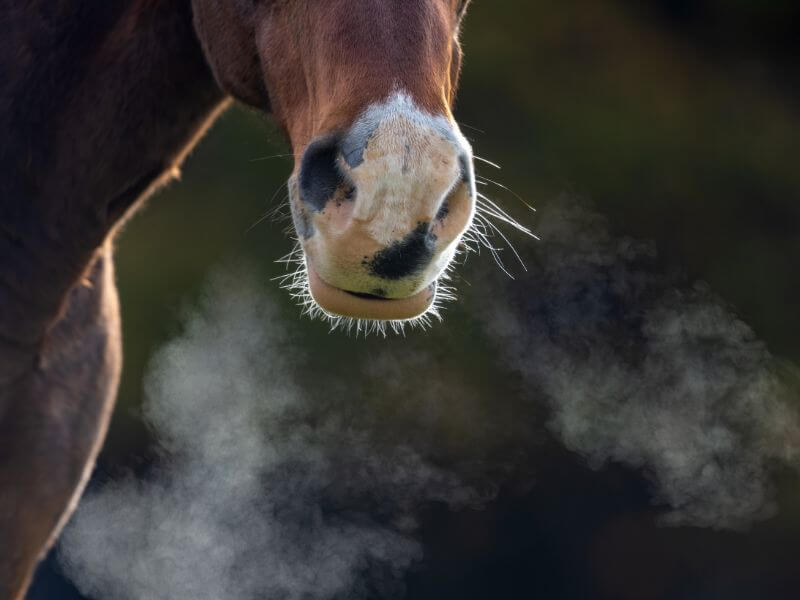
3. Tactile Hairs: Sensing the Environment
Tactile hairs which I just mentioned before, also known as vibrissae or whiskers, play a vital role in a horse’s ability to navigate its environment.
These sensitive hairs, found on the muzzle, around the eyes, and in the ears, are packed with nerve endings that enable the horse to detect even the slightest changes in air pressure, temperature, and touch.
By doing so, they can avoid potential hazards, locate food, and interact safely with other horses.
Like I said it is essential to leave these hairs intact, as trimming them may not only diminish the horse’s sensory capabilities but also increase the risk of injuries or accidents in their daily life.
4. The Structure Of A Hair Strand
Diving deeper into the composition of a horse’s hair, it is fascinating to discover that each strand comprises four unique layers, each serving a specific purpose.
The outer cuticle acts as a shield, protecting the inner layers from external factors such as weather, dirt, and debris.
The cortex, which contains pigmentation, is responsible for giving the horse’s hair its distinctive color and strength.
Meanwhile, the inner medulla provides the hair with additional insulation, ensuring that the horse stays warm in colder climates.
Finally, the root or bulb anchors the hair to the horse’s skin, enabling constant growth and renewal.
5. Horse Hair Has Growth Cycles
Horses’ hair growth cycles are a fascinating aspect of their biology, ensuring they maintain a suitable coat throughout the year.
During the active growth phase (anagen), hair follicles produce new cells, resulting in longer hair.
The transition stage (catagen) follows, where the hair follicle shrinks, and hair growth slows down.
Finally, the resting stage (telogen) takes place, during which the hair no longer grows and eventually falls out to make room for new growth.
This cyclical process is vital for horses, as it enables them to adapt to varying temperatures and weather conditions, providing insulation in colder months and shedding excess hair during warmer seasons.
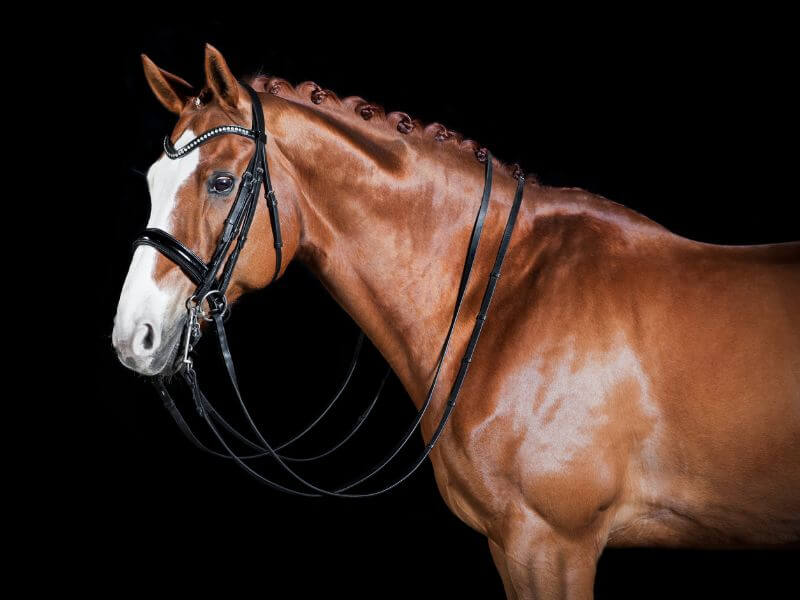
6. Coat Health Can Be Seen In The Horses Appearance
A horse’s coat health serves as a window into its overall well-being, with a shiny and luscious coat often signifying good health.
Conversely, a dull and brittle coat may indicate underlying health issues or improper care.
Ensuring your horse receives a well-balanced diet, rich in essential nutrients like protein, vitamins, and minerals, can contribute to maintaining a healthy cuticle and a vibrant coat.
It’s crucial to keep in mind that external factors, like mud or dirt, can temporarily obscure the true condition of your horse’s coat.
Regular check-ups with a veterinarian can also help identify any potential health concerns impacting your horse’s coat and overall appearance.
7. The Horse’s Coat Shine Based On A Healthy Cuticle
The health of a horse’s cuticle is crucial in maintaining that stunning, glossy shine we so admire.
A horse’s cuticle is made up of microscopic, overlapping scales that, when healthy, lay flat and form a smooth surface.
This smoothness is what allows light to reflect off the coat, giving it that much-coveted glossy appearance.
A horse’s diet and overall health play a significant role in the condition of their cuticle.
Regular grooming is also essential, stimulating the production of natural oils that nourish and protect the cuticle.
In contrast, an unhealthy cuticle, which may result from malnutrition or inadequate grooming, will cause the coat to appear dull and lackluster, robbing the horse of that gleaming appearance.
8. Nutrition Plays A Part In A Horse’s Coat Quality
A well-balanced diet is essential for promoting a horse’s overall health, and this includes the condition of its coat.
Providing the right amount of protein, specifically lysine, is crucial for hair growth and strength.
Similarly, essential minerals such as zinc and copper are integral for maintaining a vibrant, glossy coat.
Vitamins A and E also contribute to coat health by supporting skin and hair follicle functions.
In addition, incorporating omega-3 fatty acids in a horse’s diet can help improve coat shine and reduce inflammation.
9. Benefits of Omega Fatty Acids On Horses Hair
Omega-3 fatty acids play a crucial role in promoting healthy skin and hair for horses. It is are responsible for creating a natural barrier that locks in moisture, keeping the horse’s coat shiny, soft, and resilient.
In addition, these essential fatty acids can combat common skin issues like dandruff, itchiness, and irritation.
When included in a balanced diet, they can also contribute to the overall immune system function and support a horse’s ability to heal from minor skin abrasions or irritations.
Sources of Omega-3 and fatty acids for horses include flaxseed, chia seeds, and vegetable oils such as soybean or corn oil.
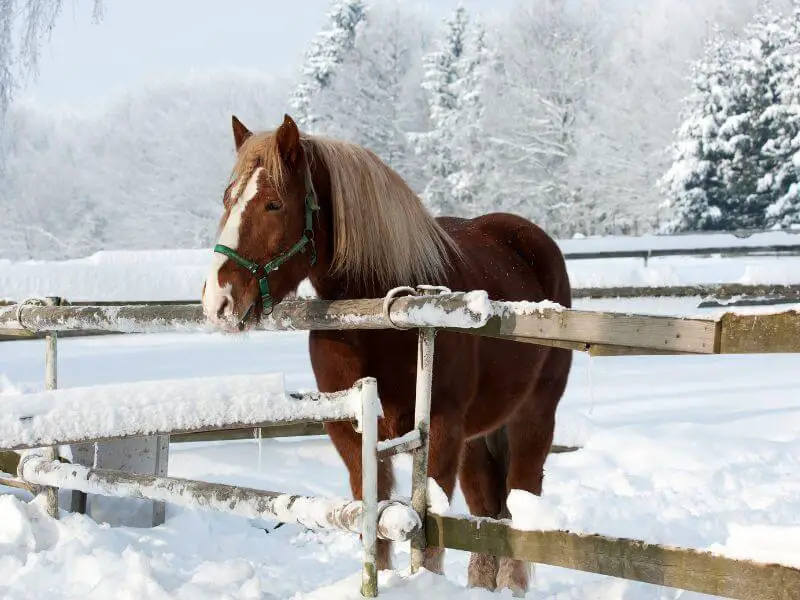
10. Seasonal Coat Changes
Horses exhibit remarkable adaptability when it comes to their coats, with three unique types that help them adjust to varying weather patterns.
The light summer coat is designed to keep them cool and comfortable during the hot months, as it allows for better air circulation and heat dissipation.
In contrast, the short winter coat offers warmth and insulation during the colder months without being overly cumbersome.
When temperatures drop even further, horses grow a long winter coat, providing them with the ultimate protection against harsh weather conditions.
This longer coat traps a layer of insulating air close to the skin, which effectively maintains their body temperature even in the most frigid environments.
Horse owners should be aware of these seasonal coat changes and adjust grooming routines accordingly to ensure their equine companions remain comfortable and healthy throughout the year.
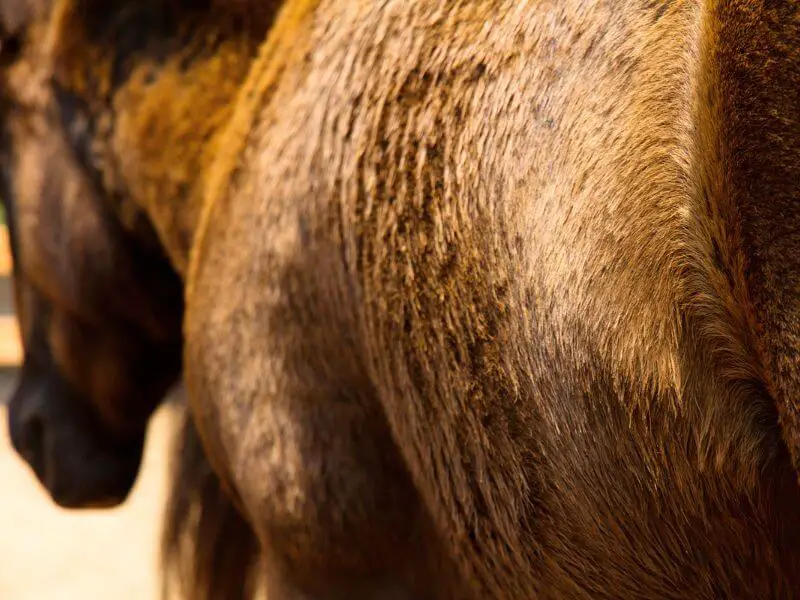
11. Daylight Triggers Hair Growth and Shedding
Horses have a unique biological response to daylight, which influences their hair growth and shedding patterns.
As the seasons change and the amount of daylight varies, their bodies adjust the thickness of their coats accordingly.
This adaptive mechanism helps horses maintain an appropriate body temperature and stay comfortable throughout the year.
For those who keep their horses under artificial lighting at night or use blankets frequently, it’s essential to be aware that this can interfere with the natural process and prevent the development of a proper winter coat.
In such cases, horse owners may need to take additional measures to ensure their animals stay warm and comfortable during colder months.
12. The Protective Role of Horse Hair
Horse hair serves as a natural armor, safeguarding the animal from various environmental factors.
The coat’s ability to shield the skin from harmful UV rays is crucial, as excessive exposure can lead to sunburn and other skin conditions.
Additionally, the dense hair acts as an insulator against harsh winds and frigid temperatures, ensuring the horse maintains a stable body temperature. This is particularly important during winter months, when the risk of hypothermia is greater.
Furthermore, the hair’s capacity to trap air creates a thermal barrier, retaining heat close to the skin and providing an extra layer of warmth.
In essence, the horse’s hair is a multifaceted defense system that not only contributes to the animal’s overall health, but also allows it to comfortably adapt to its surroundings.
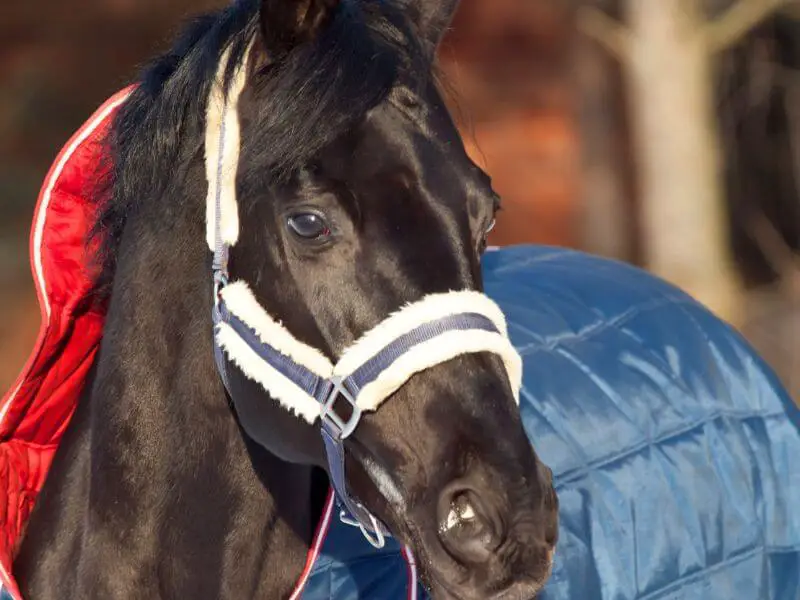
13. Piloerection: How Horses Trap Warmth
In colder temperatures, a horse’s body relies on a physiological response called piloerection to stay warm.
The individual hairs on the horse’s coat stand up, creating a layer of trapped air that serves as insulation between the horse’s body and the cold environment.
This natural mechanism is efficient at conserving body heat and keeping the horse comfortable during chilly weather.
However, when the horse’s coat becomes flattened, either by rain or heavy blankets, this insulation effect is diminished, potentially causing the animal to feel cold and uncomfortable.
To preserve the insulating properties of a horse’s coat, it’s essential to ensure that the hair is not compressed, and moisture is managed properly.
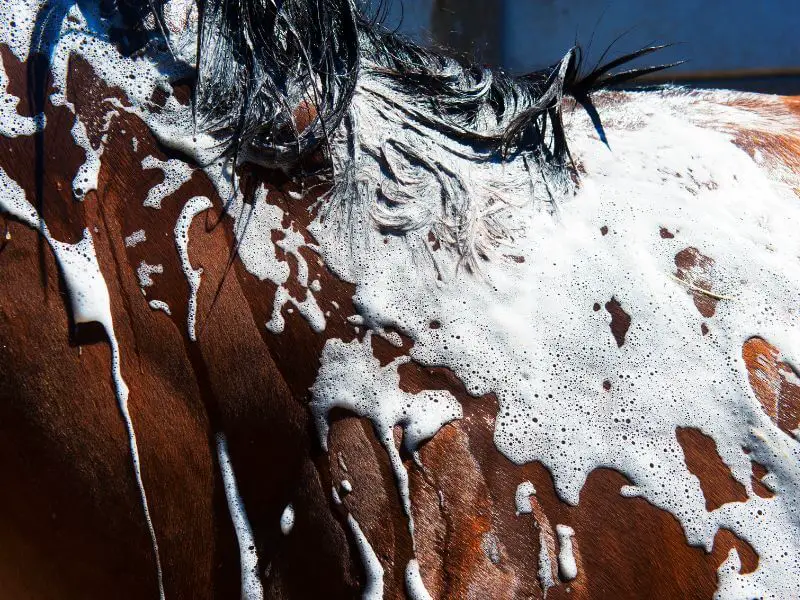
14. Natural Oils and Waterproofing During Cold Weather
Oils produced by the skin and hair of a horse are its natural protection against wetness.
Sebaceous glands in the skin release an oily substance called sebum that serves as a protective barrier against moisture.
It is especially important for horses to keep this barrier intact during the winter months so that they can keep warm and dry.
However, owners may accidentally peel away these essential oils when they bathe or brush their horses too regularly, making the animals more exposed to the harsh weather.
Therefore, horse owners should pay close attention to their grooming practices, particularly in the winter, to keep the horse’s coat healthy and resilient against moisture.
15. The Role of Manes in Waterproofing
Manes play a crucial role in a horse’s ability to stay dry and comfortable during wet conditions.
These thick, coarse hairs function similarly to the gutter system on a house, channeling rainwater down the horse’s neck and away from its body.
In doing so, the mane prevents excess water from saturating the horse’s skin and chilling it during wetter and colder months.
This evolutionary adaptation not only maintains the horse’s overall health, but also ensures that it retains its agility and performance in various weather conditions.
It’s fascinating to see how nature has equipped horses with such a functional and effective waterproofing mechanism through their manes.
16. The Importance of Grooming
Grooming is an essential aspect of horse care, as it not only ensures a horse’s physical well-being but also strengthens the bond between the horse and its caretaker.
During grooming, attention must be given to the horse’s hair, mane, tail, and hooves, as each area requires specific care.
The use of different grooming tools, such as curry combs, body brushes, and hoof picks, can help in effectively removing any buildup of dirt or debris.
Furthermore, grooming allows caretakers to inspect their horses for any skin issues, injuries, or potential health concerns, which enables timely treatment and intervention.
In addition to promoting a clean and healthy coat, regular grooming also offers the opportunity to familiarize oneself with the horse’s body and better understand its unique needs, thereby fostering a strong and trusting relationship.
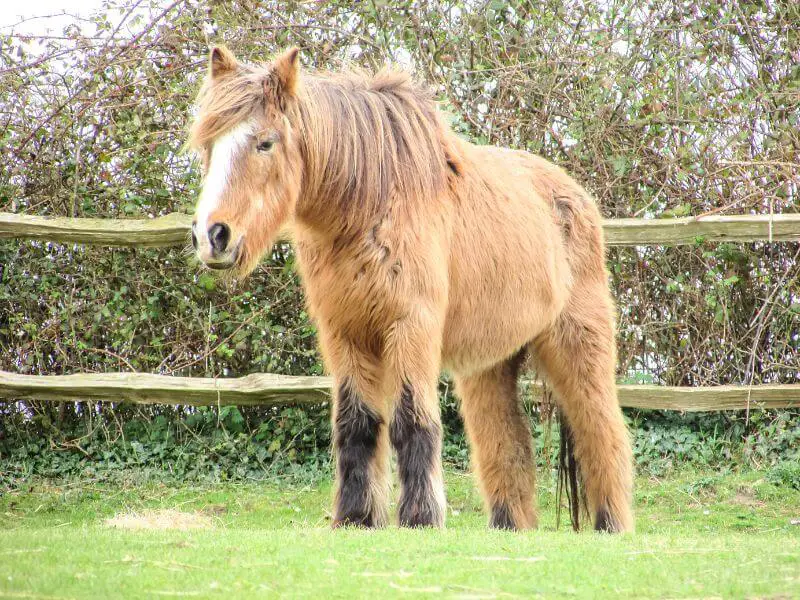
17. Excessive Hair Growth and Metabolic Conditions
When a horse suffers from a metabolic condition such as Cushing’s disease, the hormonal imbalance can lead to excessive hair growth, also known as hirsutism.
This can cause the horse’s coat to become thicker and longer, even during warmer months when shedding is expected.
The retention of a long coat during summer can make the horse more susceptible to overheating, which is why regular clipping may be necessary to help maintain a comfortable body temperature.
It’s crucial for horse owners to collaborate with a veterinarian to develop a comprehensive management plan, including proper diet, exercise, and medication, to address the underlying cause of the excessive hair growth and ensure the horse remains healthy and comfortable.
18. Hair Loss in Horses
Hair loss in horses, although not uncommon, can be a cause for concern, as it may signal a deeper issue that requires attention.
A lack of proper nutrition can lead to poor coat quality and hair loss, so it’s essential to ensure your horse receives a balanced diet, including adequate amounts of protein, vitamins, and minerals.
Anagen defluxion, a condition affecting the active growth phase of hair, and telogen defluxion, which impacts the resting phase, are two types of hair loss disorders that can result from various causes such as stress, illness, or hormonal imbalances.
If you notice your horse shedding hair excessively or developing bald patches, it’s crucial to consult a veterinarian who can accurately diagnose the issue and recommend the most suitable treatment plan.
Prompt action can prevent further complications and help maintain your horse’s overall health and well-being.
19. Horse Coat Color and Genetics
Horse coat color genetics is an intricate interplay between genes, melanin, and the environment.
The two basic types of melanin found in horse hair are eumelanin, responsible for black and brown hues, and pheomelanin, which gives rise to red and yellow shades.
These melanin types are controlled by specific genes that interact with one another in complex ways, resulting in the diverse spectrum of horse coat colors we see today.
One well-known example of a genetic interaction is the agouti gene, which regulates the distribution of eumelanin and pheomelanin within the hair shaft.
The interplay between the agouti gene and the extension gene, which controls the production of eumelanin, can give rise to several common coat colors such as black, bay, and chestnut.
Additionally, other genes can modify the base coat color, leading to patterns like dun, silver, and champagne.
As more research is conducted, scientists continue to uncover new genes and genetic mechanisms responsible for the remarkable range of equine coat colors.
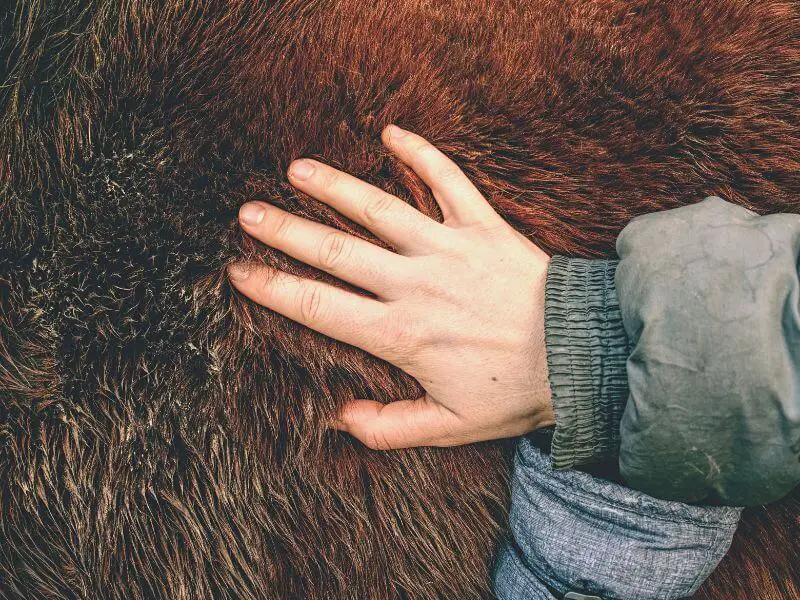
CONCLUSION ON HORSES HAIR FACTS
The intricate structure of a horse’s hair and its different purposes can provide important information about the general health and wellbeing of these majestic animals.
We can support the maintenance of a healthy, colorful coat that acts as a protective barrier against the elements by assuring correct diet, grooming, and care.
I encourage you to continue studying more about horses and the distinctive qualities that make them such amazing animals.
Cheers, Kacey
P.S. Did you like this article? Gallop over to:

